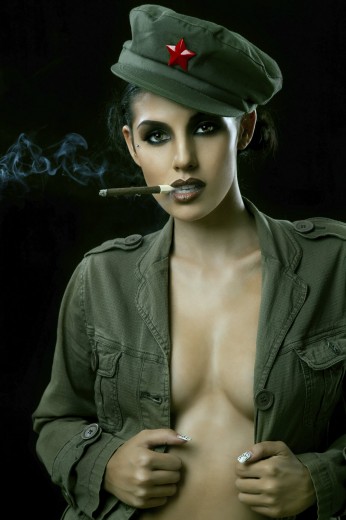With spring on the horizon it means nights out on rooftop bars, enjoying a day at the ball park or an outdoor drink after-work. It also means the chances of someone pulling out a smoke/stogie go way up. Now it’s normal to “name drop” what you’re smoking, in cigar speak that usually means referencing Cuban cigars. But the rest of Latin America and the Caribbean also offer great smokes. Check out what goes into your cigars and what other countries have to offer. It will help you choose cigars that suit your taste buds.
Dissecting Your Cigar
The Wrapper: Wrappers do more than just hold tobacco together. They’re made from dried tobacco leaves and their taste can add to your smoking experience. According to TopHatTobacco.com what affects the wrapper’s flavor most is where it’s grown. Sun-grown wrappers will protect themselves against the heat by becoming thicker in both width and veins. This creates a stronger and sweeter taste as natural sugars and oils develop when exposed to the sun.
Shade-grown wrappers are covered with sheets while growing. CigarTrends.com notes that this results in a smoother texture, fewer veins, less oils and sugars in the leaf. The result is a lighter color and milder flavor.
A word about color: Cigar wrappers will range from very dark (oscuro), to dark or reddish brown (maduro) to light (claro). No matter the hue, a good wrapper will be evenly colored.
The Filler: What’s in your cigar will affect the ‘body’ which is the strength or intensity and the flavor you taste. Filler can be a blend of several different tobaccos which will create a variety of strengths and flavors or it can be made from a single plant.
The Contenders
Much like the grapes of a fine wine, cigars vary by country and region. These patrias each provide the world with some of the finest cigaros.
Cuba
Considered the gold standard of the cigar world, the most sought after tobacco is grown in a volcanic region of Cuba called Vuelta Abajo. The region is known for its soil, climate and strict quality control. The criollo and corojo seeds are used to grow all types of leaves which create a strong and sweet filler. However tobacco from the lesser Semi Vuelta and Vuelta Arriba regions of the island are also blended with Vuelta Abajo tobacco. Cubans cigars are generally considered full-bodied, with a strong flavor and primarily dark appearance.
Honduras & Nicaragua
These countries not only share a border, but similar tasting cigars. Honduran tobacco is mostly grown from Cuban seeds. Both Cuban criollo and corojo seeds are used for their strong flavor. Like Cuban cigars, Hondurans tend to be heavy, full bodied smokes.
The capital of Nicaraguan cigar production is Esteli, a town close to the Honduran border. Tobacco from this town is considered strong. For a sweeter and lighter cigar, travel further east to the Jalapa valley. It is also happens to be the country’s most prized tobacco growing region.
Mexico
The state of Veracruz is home to the majority of Mexican tobacco. Filler is often made from home-grown San Andres tobacco plants. Mexican tobacco is often light, but when coupled with a dark maduro wrapper it delivers a spicy taste.
Dominican Republic
Cibao and Yaque Vallies are primary sources of tobacco in the Dominican Republic. They yield three traditional tobaccos known the world over. Olor, Quisqueya’s only native tobacco, gives a mild and neutral taste. It’s often used to bind and fill cigars. Piloto Cubano is a plant derived from Cuba’s Vuelta Abajo. Its rich, intense flavor is often used to add strength to filler. San Vicente is a hybrid of Piloto developed on the farms of San Vicente, but light and acidic in taste. Overall, Dominican cigars tend to be milder smokes when compared to Cuban or Honduran cigars.
Brazil
Bahia, on Brazil’s central east coast, is the tobacco growing region of the country. The most commonly grown tobacco is called Mata Fina. Mata is a dark, sweet tobacco and used primarily in cigars as filler.
Not only does your cigar’s birthplace make a difference in how it tastes, but things you would never think of – how and where it was raised, its texture and color—all affect your cigar smoking experience. So the next time you decide to indulge, you’ll be armed with all the info you need to do some “name dropping” yourself.
Image credit- istockphoto.com/Daniel Bendjy

